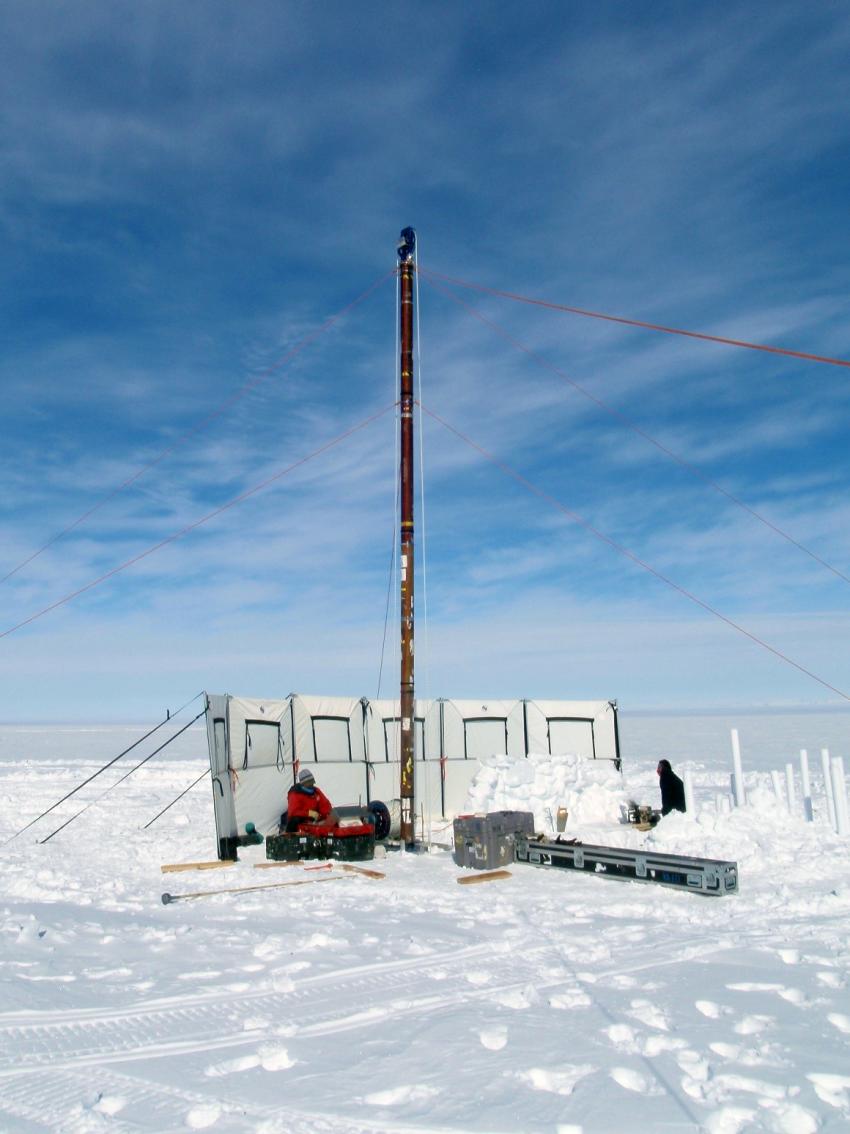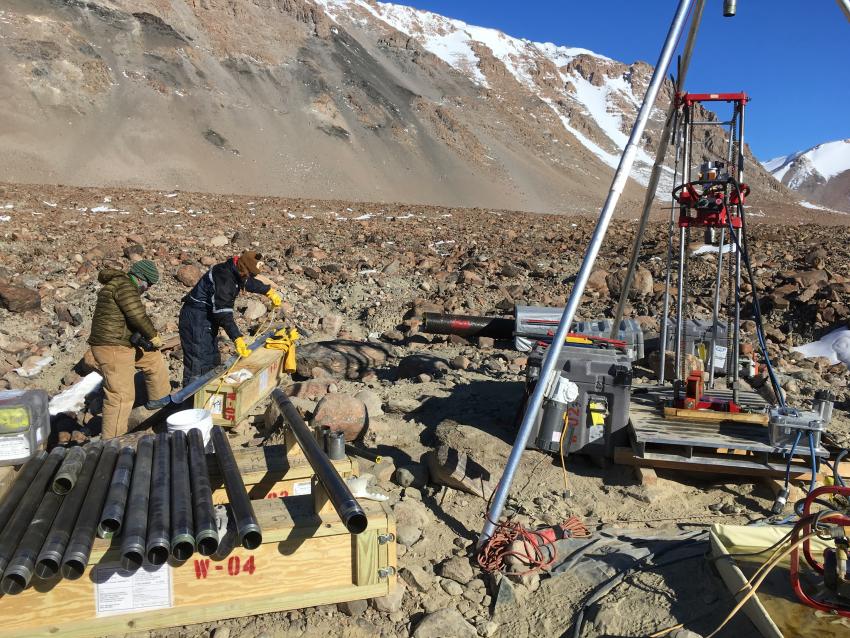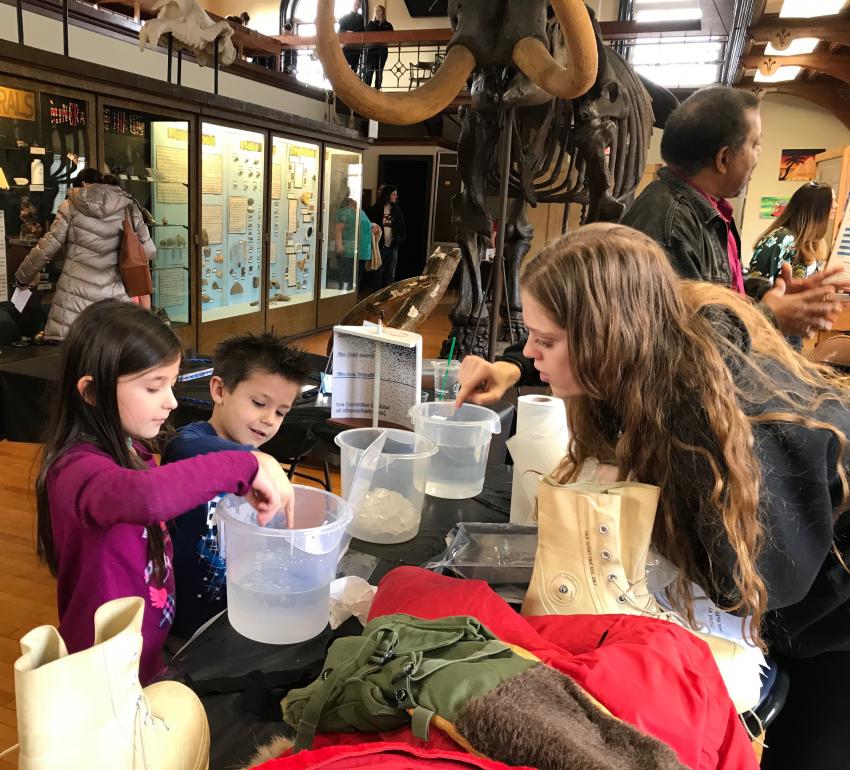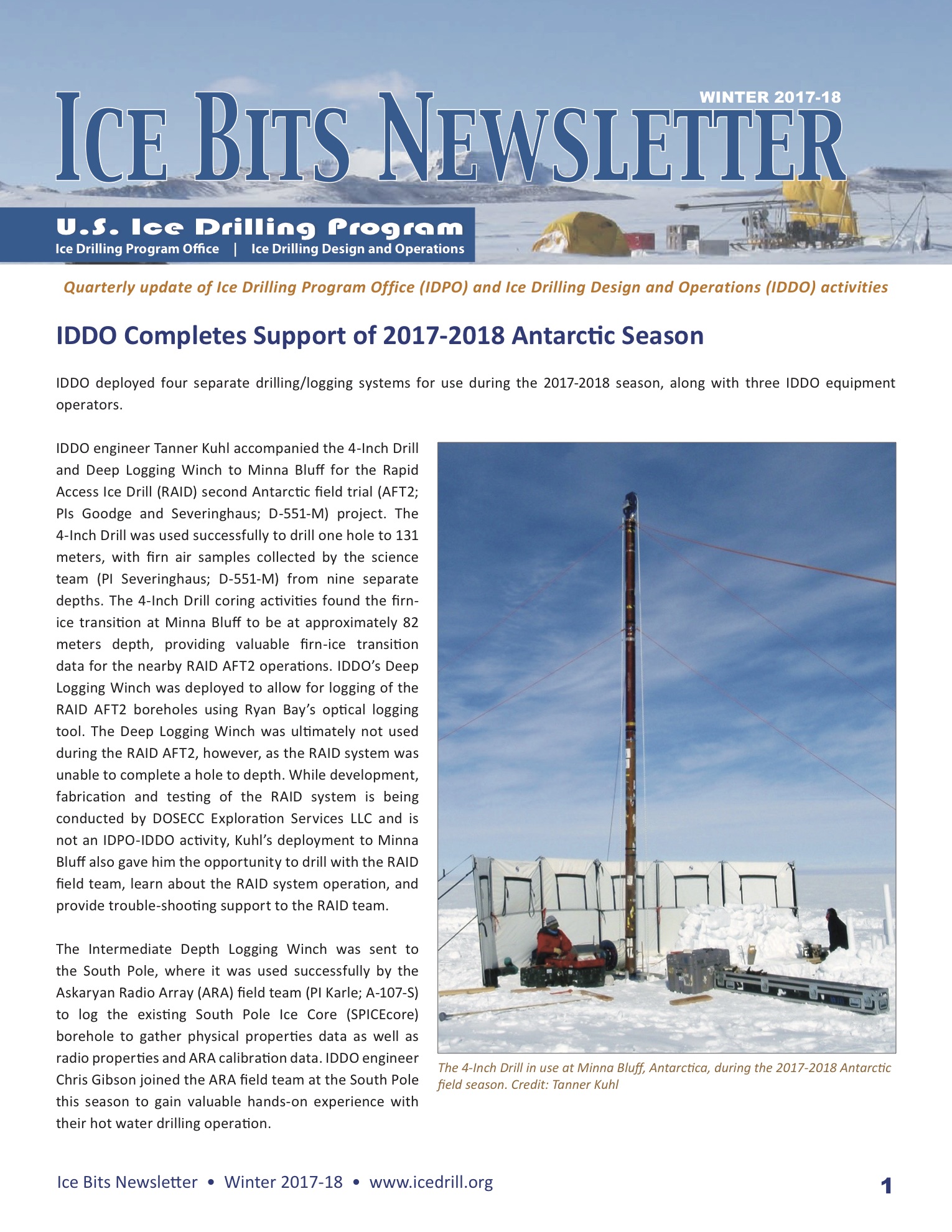IDDO deployed four separate drilling/logging systems for use during the 2017-2018 season, along with three IDDO equipment operators.
IDDO engineer Tanner Kuhl accompanied the 4-Inch Drill and Deep Logging Winch to Minna Bluff for the Rapid Access Ice Drill (RAID) second Antarctic field trial (AFT2; PIs Goodge and Severinghaus; D-551-M) project. The 4-Inch Drill was used successfully to drill one hole to 131 meters, with firn air samples collected by the science team (PI Severinghaus; D-551-M) from nine separate depths. The 4-Inch Drill coring activities found the firn-ice transition at Minna Bluff to be at approximately 82 meters depth, providing valuable firn-ice transition data for the nearby RAID AFT2 operations. IDDO's Deep Logging Winch was deployed to allow for logging of the RAID AFT2 boreholes using Ryan Bay's optical logging tool. The Deep Logging Winch was ultimately not used during the RAID AFT2, however, as the RAID system was unable to complete a hole to depth. While development, fabrication and testing of the RAID system is being conducted by DOSECC Exploration Services LLC and is not an IDPO-IDDO activity, Kuhl's deployment to Minna Bluff also gave him the opportunity to drill with the RAID field team, learn about the RAID system operation, and provide trouble-shooting support to the RAID team.
The Intermediate Depth Logging Winch was sent to the South Pole, where it was used successfully by the Askaryan Radio Array (ARA) field team (PI Karle; A-107-S) to log the existing South Pole Ice Core (SPICEcore) borehole to gather physical properties data as well as radio properties and ARA calibration data. IDDO engineer Chris Gibson joined the ARA field team at the South Pole this season to gain valuable hands-on experience with their hot water drilling operation.
The Winkie Drill successfully completed its second field season, this time in Ong Valley (PIs Putkonen and Morgan; G-192-M). Drill upgrades made in Madison following the previous project in the Ohio Range proved successful, and IDDO engineer Grant Boeckmann was able to collect quality mixed media cores consisting of ice, silt and rock. While the original project goal was to collect three cores from two separate sites (six cores total), the ice encountered contained much more sand, silt and rock than the PIs anticipated. One core was collected at each of the two sites, with one core to 10 meters and one to 12 meters depth. The higher debris content proved very useful for the science goals, reducing the number of holes needed.
IDDO also supported six hand auger projects during the 2017-2018 field season through the provision of Hand Auger and Sidewinder equipment.








